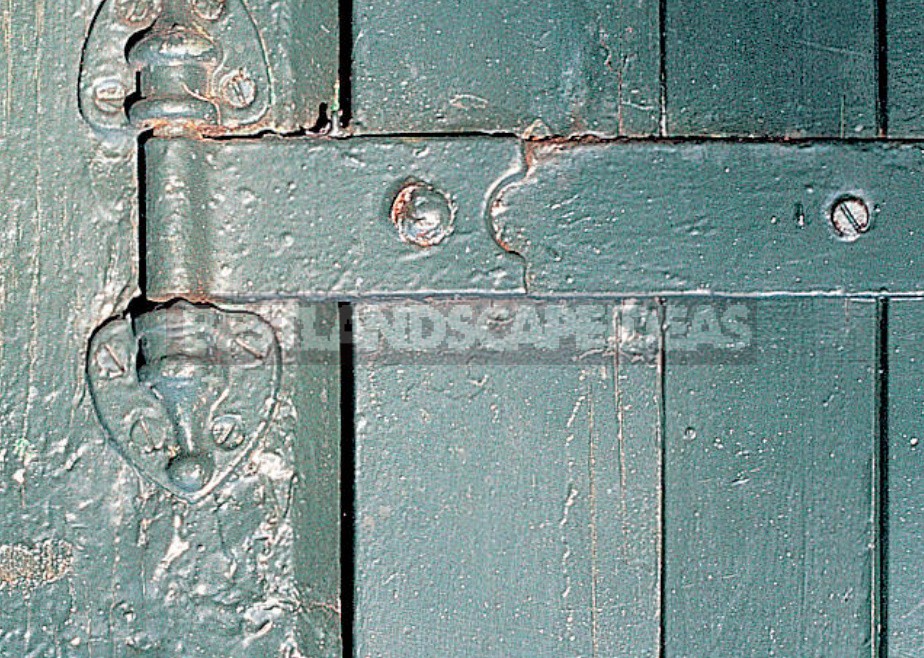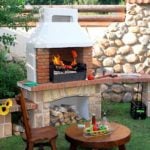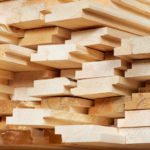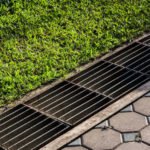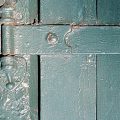Most of the wooden products in and around the house will someday be painted or varnished, and if they are in good condition, they will be a suitable basis for a new paint. However, when many layers of coating are already laid, the shape of the platbands of doors and windows and other profile parts begins to be distorted, and the coating itself looks lumpy and unattractive.
In such cases, it is best to clean off the old paint to the wood and start all over again. Roughing is also required when the paint coating is damaged and flakes off, forms hair cracks or swells.
Undamaged coating
From the bottom up, wash the paintwork with a warm aqueous solution of ordinary detergent or a product containing sodium orthophosphate. Pay special attention to the places around the door handles and window latches, where there is most dirt. Rinse with clean water.
Sand the glossy paint with a fine-grained water-resistant sandpaper soaked in water to prepare the surface for painting and remove stains.
Seal the cracks in the joints and recesses or holes with elastic putty and sand it after solidification. Update the crumbling putty, and close up the cracks around the window and door frames with an elastic acrylic sealant or mastic.
Liquid abrasive or elastic acrylic sealant
You can prepare an undamaged paint coating for a new paint job with a liquid abrasive or an acrylic sealant.

Liquid abrasive: apply it with a cloth or sponge to the surface and after a while it will slightly soften the top layer of paint and make its surface matte. Now it is perfect for applying a new layer of paint. This chemical simultaneously washes the paint surface and cleans it from dirt.
Acrylic sealant is ideal for sealing large cracks or cracks in painted wood. It is applied into the slot using a plunger gun with a cartridge and smoothed with a wet cloth. No sanding is required. You can paint it in an hour.
Damaged coating
Defective paint or varnish coating (as in the examples below) must be cleaned to the wood. You can use different methods, but first be sure to clean off the lagged coating.
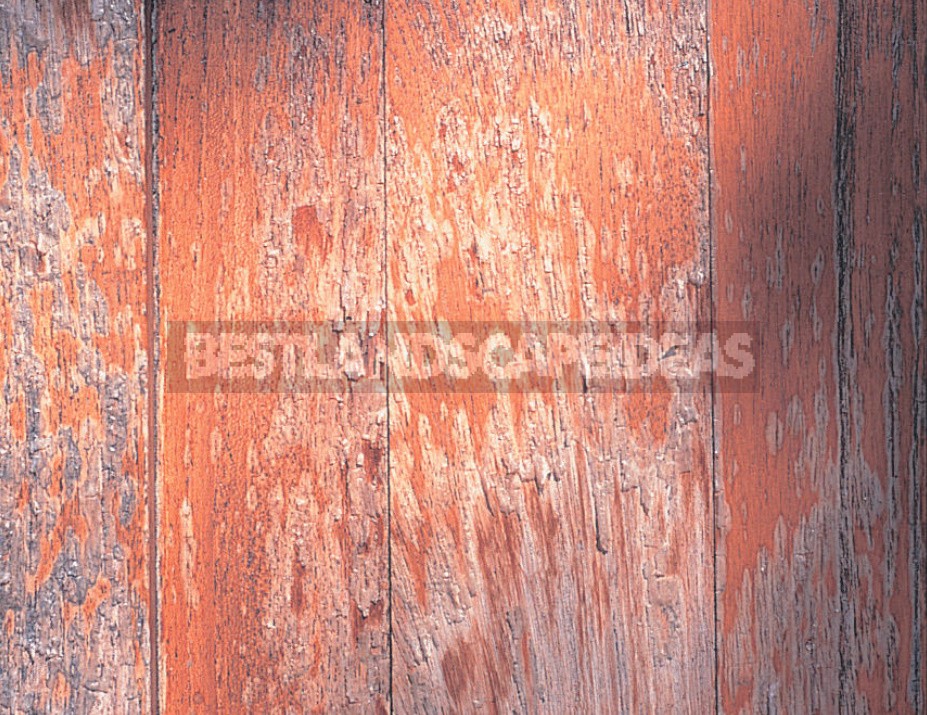
In some cases, when the paint is completely dry and peeling, it may be enough to clean it off in a dry way with a rented cycle and sand it a little with a sandpaper. If the main part of the paint is held firmly on the wood, you will have to remove it all the way to the wood.
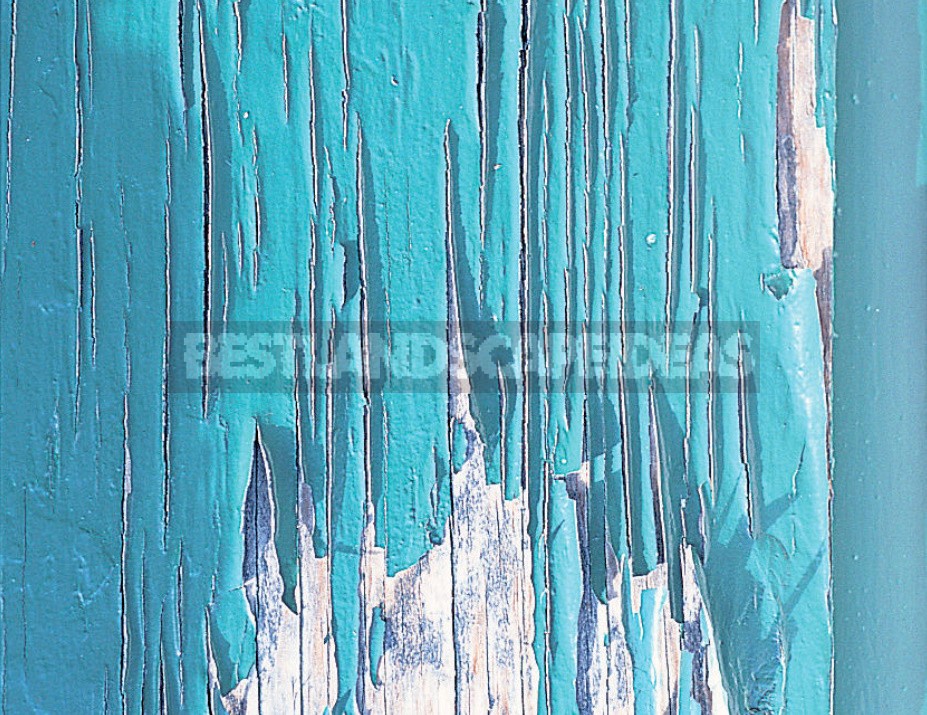
Removing paint with a gas burner
The traditional method of cleaning the surface from old paint is to heat it with a gas burner (blowtorch). You can also use a more complex burner, which is connected to a large gas cylinder with a hose, has a fine adjustment and is also suitable for soldering with both soft and hard solder. To reduce the risk of fire, remove curtains and lambrequins, remove old bird nests from behind the drain boards and from under the eaves.
It is only necessary to soften the paint so that it can be cleaned off — but keep in mind that it can very easily catch fire. Collect the cleaned paint as it is cleaned in a paint container or bucket.
Important: do not heat old (produced before the 1960s) paint, which may contain lead.
Start with the profile elements and work from the bottom up. Constantly move the flame so as not to burn the wood. When the paint softens, clean it with a scraper (curly scraper).
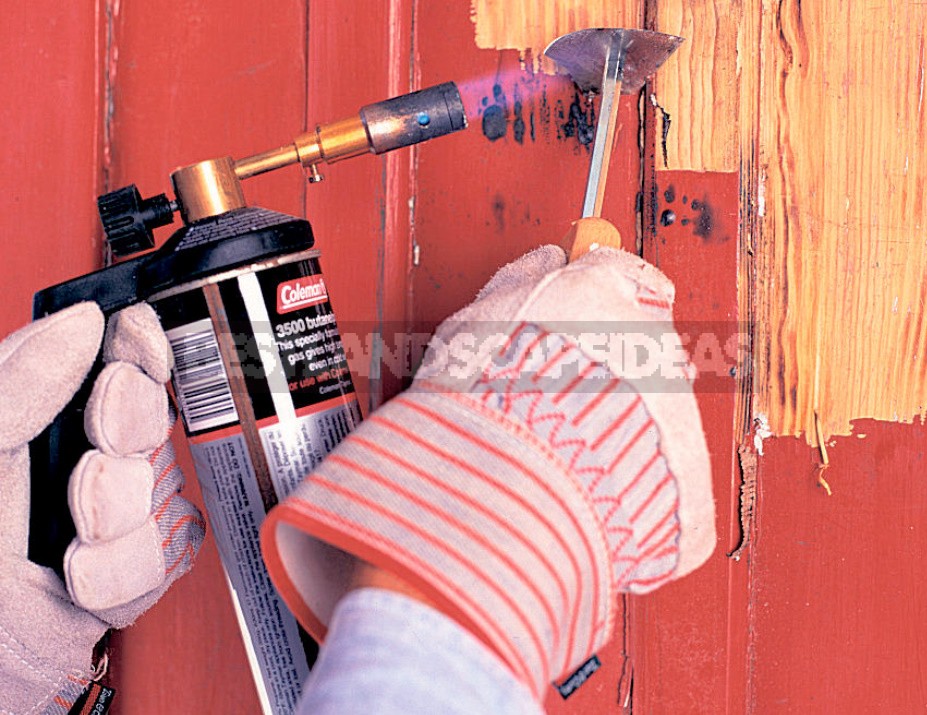
If it does not lag behind or remains too hard, warm it up a little more and try to peel it off again.
When you are done with these parts, clean the flat surfaces with a wide paint scraper.
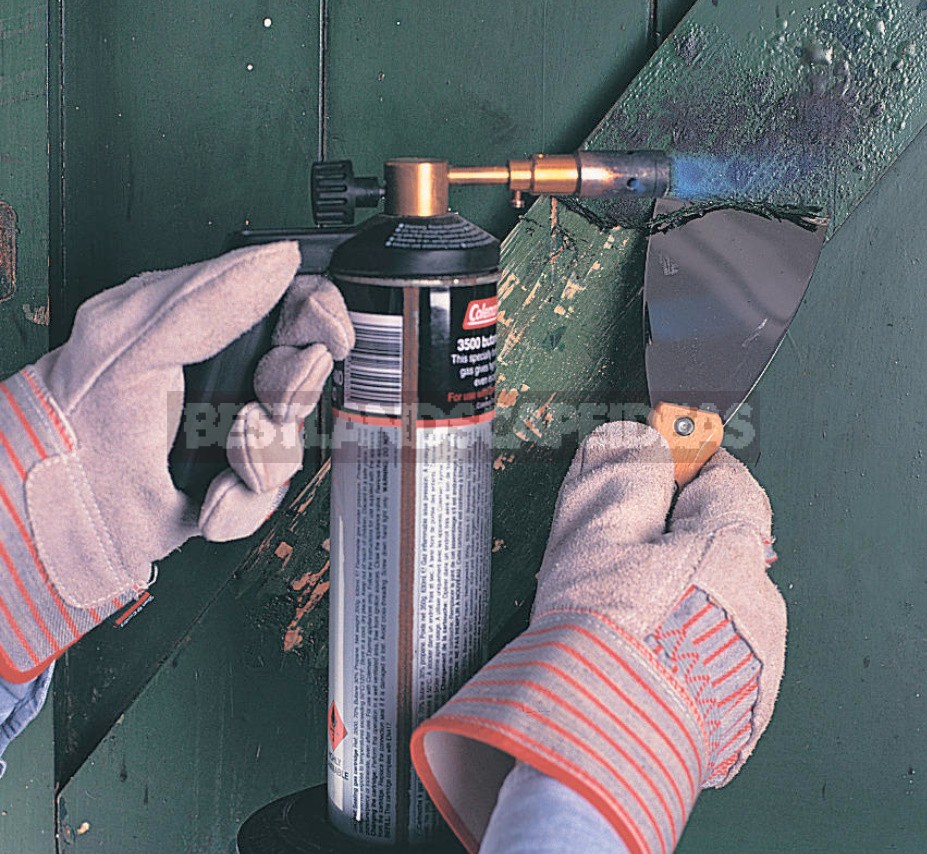
After removing the paint, treat the wood with a medium-grained sandpaper to clean off the hardened fine paint particles and possible small burns. In the case of deep burns, remove the blackened wood with a skin or a loop, then putty the recesses and paint, pre-priming the burned places with an aluminum primer for wood.
Removal of old paint with lead content
Until the 1960s, lead-containing paints were used. The process of removing them is dangerous to health. It is impossible to clean off such paints with a burner or a dry abrasive material, especially with a grinder. A home vacuum cleaner will not retain the smallest particles of lead, so rent an appropriate industrial vacuum cleaner. Wash your hands thoroughly after work.
